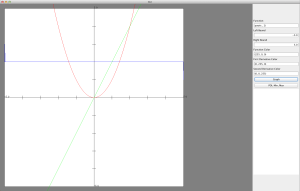The first time I heard of computer programming, I thought it was teaching a computer what to think. I thought it meant how to get computers to do certain tasks and create different types of programs. While that is partially true, what I was thinking was only a small subset of what computer programming actually is. The basis of computer programming is telling the computer what to do. What you want it to do is up to you. You can automate processes (such as assigning groups), you can solve complex equations (calculators), you can program robots to move and analyze things (Mars rovers), etc. In the most general terms, you are instructing a machine to do a certain task, and it returns a certain output, usually accomplishing the task.
When my grandfather had a stroke, I had just completed my 7th grade. I wasn’t very close with him, but it still came as a shock to me. For the next few years I went to India but I never really conversed with him that much. I usually helped him walk down the stairs and walk around the base of the apartment, but I didn’t start talking to him until my sophomore year. When he came to the US, he was sitting bored in one corner of the house for extended periods of time. There wasn’t much my grandmother could do either, so she resigned to watching TV and going on walks. I decided to go and talk to him. I remember my dad mentioned that he was a Math Professor, so I brought my Pre-Calc textbook and asked him to do five problems. I wanted to see if he still remembered this stuff or if I could reteach it to him.
He struggled with the first few problems. I aided him along the way, asking him if he remembered specific things such as trig identities and factoring equations. As he got more comfortable, I figured he could do more. I gave him a few more problems but after a while I had to call it a night. The next day I went and asked him to try a few more problems, all similar to the ones I gave him the previous day. However, he looked at the problems with a blank expression on his face. I pulled up a chair and aided him again, and he was able to formulaically do the next few.
The real test was when I gave him a word problem. In that specific problem, it was just a similar equation put into word form. I wanted to know if he could convert the question into the previous format and then solve it methodically, just as he had done on the previous problem. However he was unable to understand the concept! I stopped and realized that he hadn’t actually relearned anything. He was simply memorizing formulas on how to take the factors of an equation or how to implement a trig identity.
I figured that this was a similar problem in trying to get our computer to do our work for us. When we program a computer, we expect it to have implicit obedience to its user. We don’t program it with a mind of its own, it simply listens to whatever command the user enters and outputs whatever it is told to produce. Therefore we can never have true artificial intelligence because it seems as though the robot can never have a mind of its own.
I went back to working with my grandpa on some math problems, but this time I didn’t guide him by reminding him on which formulas he needed to use. Instead I just had him sit there and stare at the problem. When he started telling me to write the next step down for him, I asked him to tell me what that step was. He finally gave in and started thinking about it on his own. He would remember what the formulas were, and even though he messed up sometimes, like with a positive instead of a negative sign, he was still able to figure out the solution on his own. He started showing signs of improvement in his work. I gave him a few more word problems and he understood how to frame them into equations.
So what if “real” artificial intelligence doesn’t work out? Does it really matter if we know that the robot has been programmed one way or another rather than learn things through trial and error? The important part is that the machine can understand how to process different kinds information and produce a good outcome. And the fact that machines can process and run through simple calculations much faster than innate human capabilities means that computers will learn faster than us.
People say that we’ve reached the computer age, where everyone should be computer literate. However, that age will soon pass, and we’ll approach the age where everyone should know how to teach, because we’re going to be teaching computers to do things for us.







